Facebook reports on conversionsA conversion is counted whenever a website visitor performs an action that fires a standard event, custom event, or custom conversion. Examples of conversions include purchases, leads, content views, add to cart, and registrations. More that occur as a result of someone seeing or clicking on your ad, rather than a simple click to immediate conversion. Facebook is changing conversion attributionAttribution is how Meta gives credit to an ad for a conversion. Your Attribution Setting determines how your ad will be delivered and the reporting attribution window. The default Attribution Setting is 7-day click and 1-day view, which means that anyone who converts within 7 days of clicking or 1 day of viewing your ad will be counted as a conversion. More by phasing out the 28-day window on October 12, citing privacy initiatives.
Digital privacy initiatives affecting multiple browsers will soon limit the ability of businesses to measure people’s interactions across domains and devices. In support of these initiatives, Facebook is planning updates to attribution windows across our ads reporting surfaces.
Let’s take a closer look at what this means, how it will impact your advertising, and what you can do to prepare.
What Does This Mean?
Historically, Facebook reports conversions attributed to advertising that occur within 28 days of clicking or 1 day of viewing (and not clicking) your ad. This has long been a rather controversial (to some) and even mysterious (to others) method for conversion attribution. It’s often a surprise to newer advertisers who assume that Facebook is only reporting on those who click and immediately convert.
It’s not clear from Facebook’s announcement, but it seems as though they expect that collecting and reporting on this information will become increasingly difficult due to “privacy initiatives.” It suggests that they believe a 7-day attribution window is safe, whereas anything more may soon lack dependability — if it’s available at all.
How Will This Impact Your Advertising?
It depends, and it’s not entirely clear.
Facebook suggests that you may notice fewer reported conversions as a result of this change. That’s a potentially bad thing when it comes to determining the success or failure of your ads. But, how much it impacts your reporting will depend upon the length of the customer journey, as well as how you advertise.
For example, if the typical sale or conversion happens quickly (impulse buys or low-priced products), you can expect very little change in conversion reporting. On the flip side, higher-priced commitments may take longer for a customer to convert from initial click to purchase. This could be especially bad for such companies.
Also, it likely depends on how you target. If you regularly remarket and target those who also receive messaging from you elsewhere, you may see fewer conversions counted. An example is that I often see my Facebook advertising conversion numbers jump on days that I promote a product via email that I’m also promoting with ads. The reason is that some of these people who received my email (and acted on it) also clicked on one of my ads (but didn’t previously convert).
No Impact on Delivery and Performance?
According to Facebook:
Note that this change has no impact on delivery or performance of your ads.
I was initially skeptical about this, but after hearing more from Lucas on our team and getting further confirmation from some of our helpful readers in the comments, this does appear possible.
Facebook is eliminating the 28-day attribution window, which wouldn’t necessarily impact the conversion window (two different things).
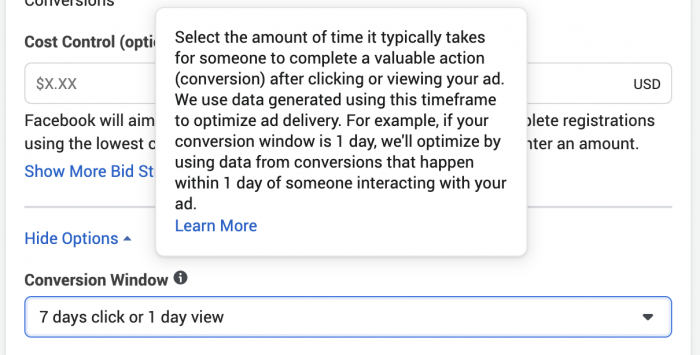
The attribution window is how Facebook reports conversions to you; the conversion window is how Facebook optimizes. And the conversion window already falls within a maximum of seven days.
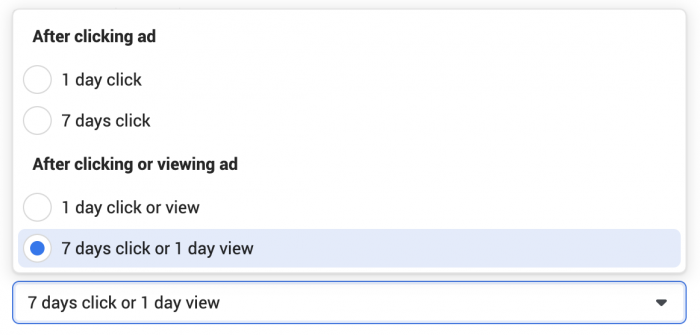
The whole thing feels a bit unnecessarily inconsistent and complicated (why can’t they be measured the same way?), but in this case that may actually be an okay thing. It doesn’t appear this change will negatively impact delivery or performance, as Facebook claims.
How You Can Prepare
One primary way you can prepare for this change is to get a sense of how many conversions Facebook historically reports beyond the 7-day click attributionClick Attribution is one way Meta gives credit to an ad for a conversion. Credit will be given to an ad when someone clicks your ad within a specified number of days of clicking. Click Attribution options include 1-day click, 7-day click, and 28-day click, the last being only available for reporting. More window. Knowing those will go away will help you understand how your numbers will be impacted in the future.
Customize your columns in Ads Manager.
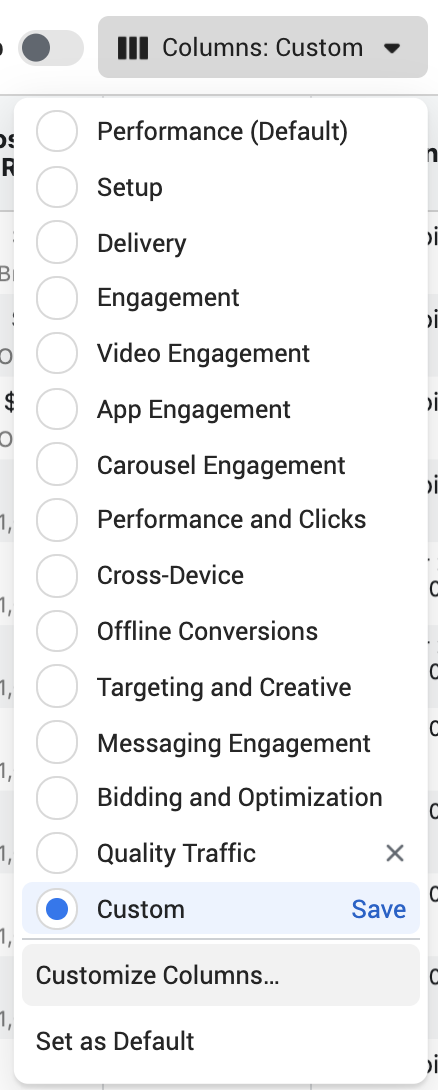
At the bottom right corner of the window that pops up, you’ll see an area for Attribution Window and a link to compare windows.
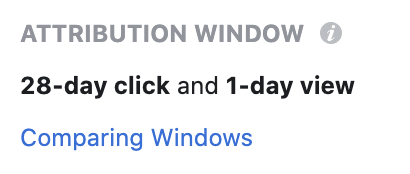
Once you click that, you’ll be able to add columns for each click and view window. There isn’t much reason to bother with anything beyond a 1-day view because those aren’t reported by default. Focus on 1-day view as well as 1-day, 7-day, and 28-day click.
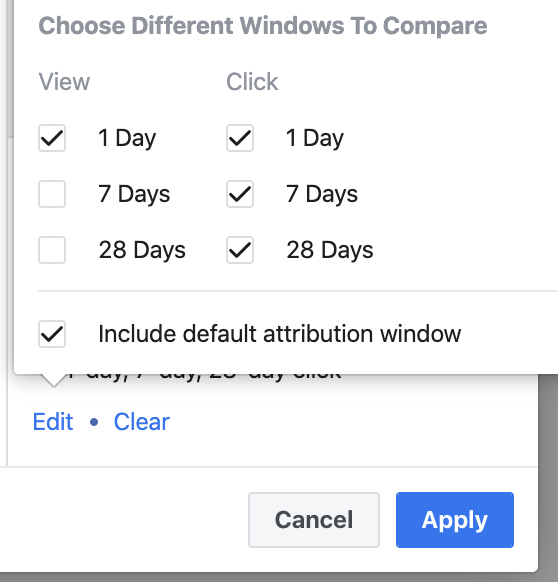
Facebook will add columns for each. Here’s an example for the Purchase event…

Note that this can be a little misleading, and you’ll need to do some math. The 28-day click numbers also include 1-day and 7-day; the 7-day click numbers include the 1-day click numbers. So, to isolate the 2-7 days and 8-28 day clicks, we’d do this…
- 1-Day Click: As reported
- 2-7 Day Click: (7-Day Click) MINUS (1-Day Click)
- 8-28 Day Click: (28-Day Click) MINUS (7-Day Click)
While there are 8 purchases that occurred within 28 days of a click in the example above, that includes the 6 that happened within 7 days and the 2 that happened within 1 day. So, the reality of attribution distribution in the example above is as follows:
- 1-day View: 2
- 1-day Click: 2
- 7-day Click: 4
- 28-day Click: 2
I’ve done a historical breakdownBreakdown is a way to get insights into your ad performance related to time, delivery, action, or dynamic creative element. More of my reporting for the past four years, and it shakes out like this for purchases and registrations for 28-day click (not including 1 and 7-day click)…
- Registrations: 7% of all reported
- Purchases: 30% of all reported
What explains the difference? Registrations are for free stuff like a webinar, quiz library, or video series. These decisions are made quickly and without much thought. Someone who clicks an ad for a product may take days or weeks to finalize their decision.
This means that I shouldn’t expect a noticeable drop in my registrations once this change goes into effect. But my purchase reporting, however, may take a significant hit. That doesn’t mean that fewer purchases will happen, of course, only that Facebook will report fewer of them.
Now, how my numbers shake out are heavily influenced by how I target. When it comes to selling products, I do a lot of retargeting to a small and relevant audienceThis is the group of people who can potentially see your ads. You help influence this by adjusting age, gender, location, detailed targeting (interests and behaviors), custom audiences, and more. More. These people are more likely than most to get prodded from me in different places, leading to an initial click and eventual conversion much later.
This, of course, isn’t necessarily the strategy for many — or even most — advertisers, who are likely to see a lighter distribution of purchases beyond seven days.
Your Turn
What are your thoughts on this change? Do you expect it to make a noticeable difference? Do you believe that it won’t impact delivery or performance?
Let me know in the comments below!

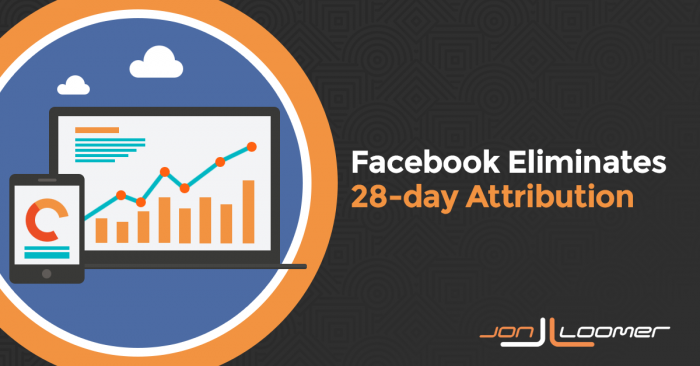 Facebook reports on
Facebook reports on 





